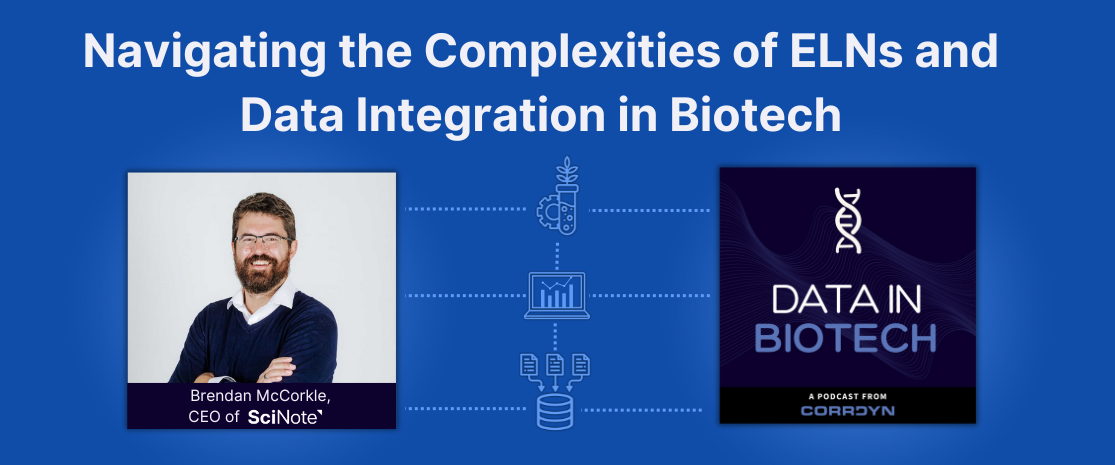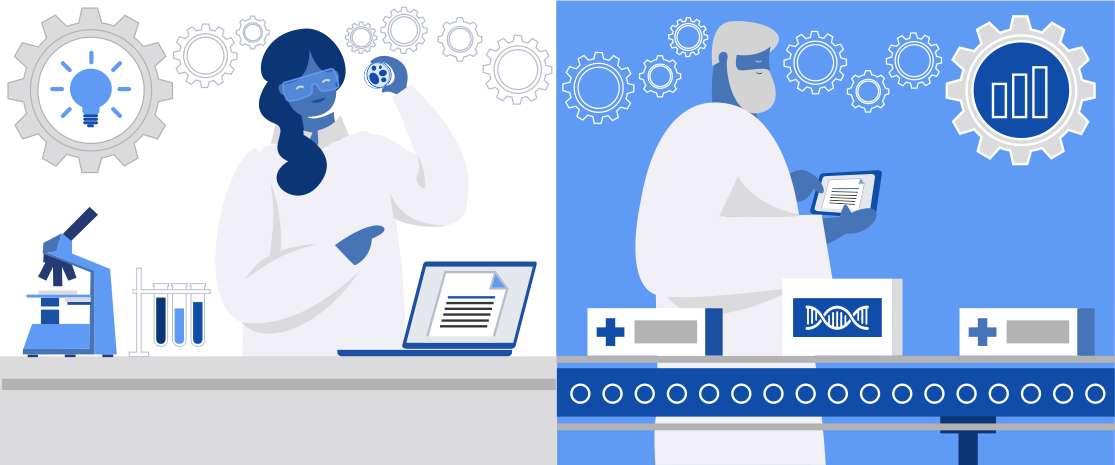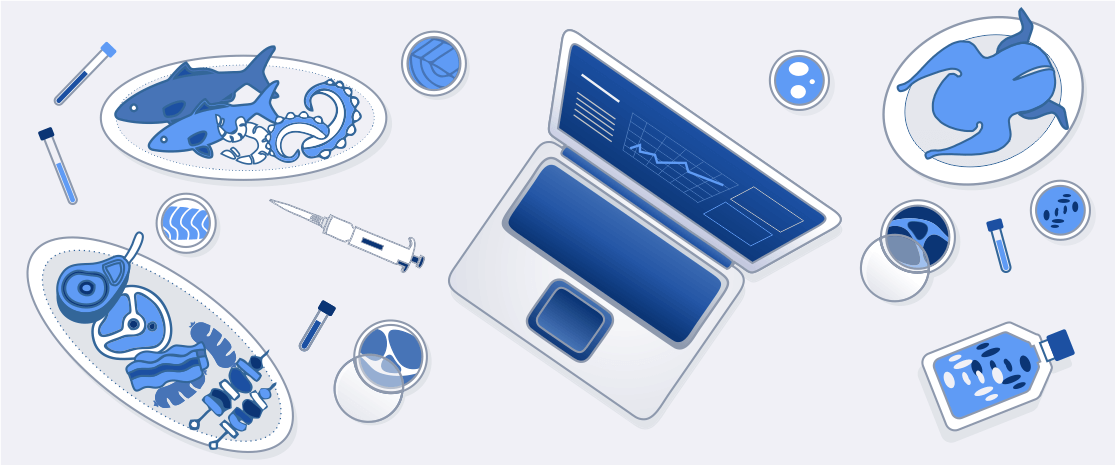Navigating the Complexities of ELNs and Data Integration in Biotech: Insights from a Conversation
The adoption of modern technology has played a pivotal role in driving progress, especially in industries like biotech and research and development (R&D). Recently, on the Data in Biotech podcast by CorrDyn, SciNote’s CEO Brendan McCorkle discussed the complexity of integrating diverse data sources within biotech organizations, and the intricacies of implementing robust integration solutions, including electronic lab notebooks (ELNs), that can accommodate both human-entered and machine-generated data while ensuring data fidelity and security.
Listen to the full podcast episode on Spotify or Apple, or continue reading to get only the key takeaways from the conversation.
Transitioning from Paper to Digital
The transition from traditional paper-based methods to digital platforms like ELNs marks a significant milestone in the evolution of research workflows. Now we are faced with another monumental transition – eliminating Excel from our workflows. Brendan highlighted the importance of moving beyond the initial phase of eliminating paper and focusing on phase two, which involves the elimination of Excel. He emphasized the need for scientists to adapt to new digital tools, stating, “Excel is the tool you all have been using, and this is the scary part. But just like paper, Once Upon a time, paper was the way you were doing it. And now if we’re right and the movement away from paper is right, the paper is wrong in view against modern technology.”
Relying solely on Excel to keep track of your data can pose some significant challenges, especially when it comes to security. You can learn all about them in this short clip.
Supporting Flexible Workflows
One of the key advantages of ELNs is their ability to support diverse workflows within research organizations. Brendan emphasized the need for flexibility in user interface (UI) elements to mirror flexible workflows seamlessly. “We need to allow people to set up relatively flexible UI elements to mirror relatively flexible workflows so that when they’re moving through the workflow, they don’t feel like we’re making them think about the steps in the workflow,” Brendan explained.
Integrating with Existing Systems
Seamless integration with existing systems and processes is crucial for the successful implementation of ELNs. There is no one-size-fits-all solution, and organizations must prioritize solutions that can evolve alongside their changing needs. A collaborative approach, where software vendors work closely with customers to understand their unique workflows and requirements, is essential.
Brendan underscored the importance of collaboration and interoperability. “It’s really important that someone making this decision hears from someone from my side of the table. Do not accept the answer that it can be all us. This is hypocrisy at best. Hubris at worst. It’s not true.” This is also where APIs and ecosystems can play an important role in facilitating integration and data exchange between different platforms.
Harnessing Machine Learning and AI
Looking to the future, Brendan discussed the role of machine learning (ML) and artificial intelligence (AI) in enhancing ELN platforms. He differentiated between ML and AI, noting that much of the current work revolves around ML rather than true AI. “Much of what the work is happening now is really more ML than AI, so it’s not as sexy to say that,” Brendan explained. He also highlighted the potential of ML-driven features such as advanced search suggestions and automated data analysis to streamline research workflows.
- Interested in integrating AI in biotech R&D? Here are 5 essential data strategies for success [blog post + discussion].
The Path Forward
Finally, Brendan offered some insights into the future of ELNs and the evolving needs of research organizations. He discussed the emergence of industry-specific language model (LM) solutions tailored to the unique security and trust constraints of biotech companies. “There will be private, friendly LMs for biotech and life sciences where a Pfizer or Novartis would look at this and go. I could actually accept using this,” Brendan predicted. He also highlighted the role of advanced OCR solutions in facilitating data entry and automation within ELN platforms.
Final Thoughts
As we navigate the ever-evolving landscape of biotech research, it’s clear that embracing digital solutions and supporting flexible workflows are crucial steps towards unlocking new levels of efficiency and productivity. It is important to acknowledge the limitations of existing tools like Excel and transitioning towards more robust solutions capable of accommodating the growing complexity of research data. Moreover, as the industry progresses, the integration of private LMs and advancements in Optical Character Recognition (OCR) technology promise to revolutionize ELNs even further. By embracing these innovations and remaining mindful of the challenges and opportunities on the horizon, biotech organizations can pave the way for groundbreaking discoveries and innovations in the field of life sciences.






